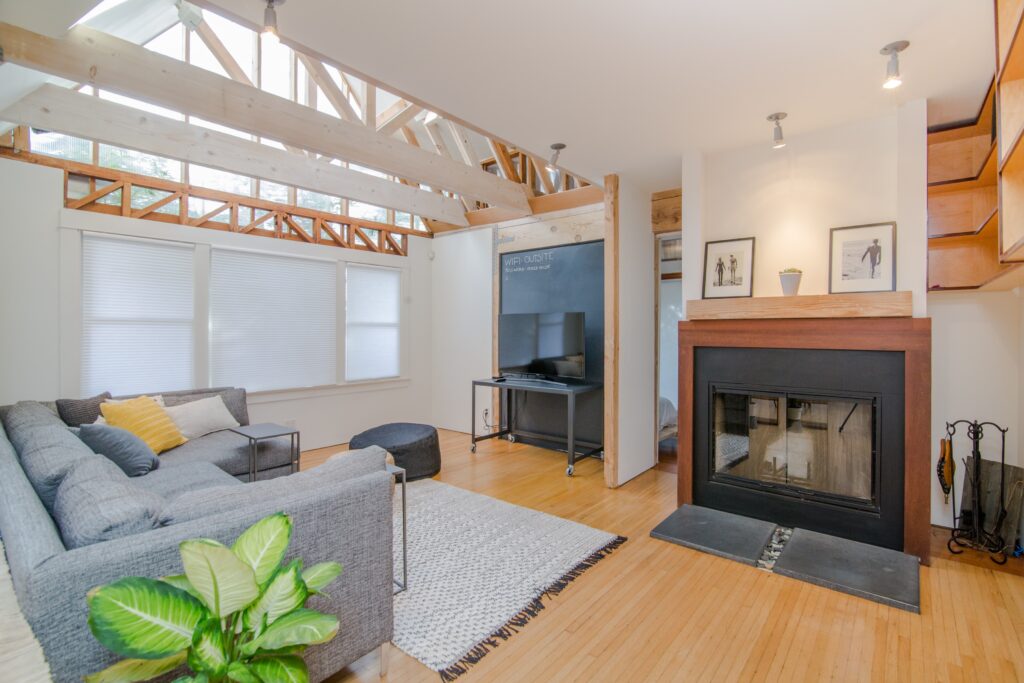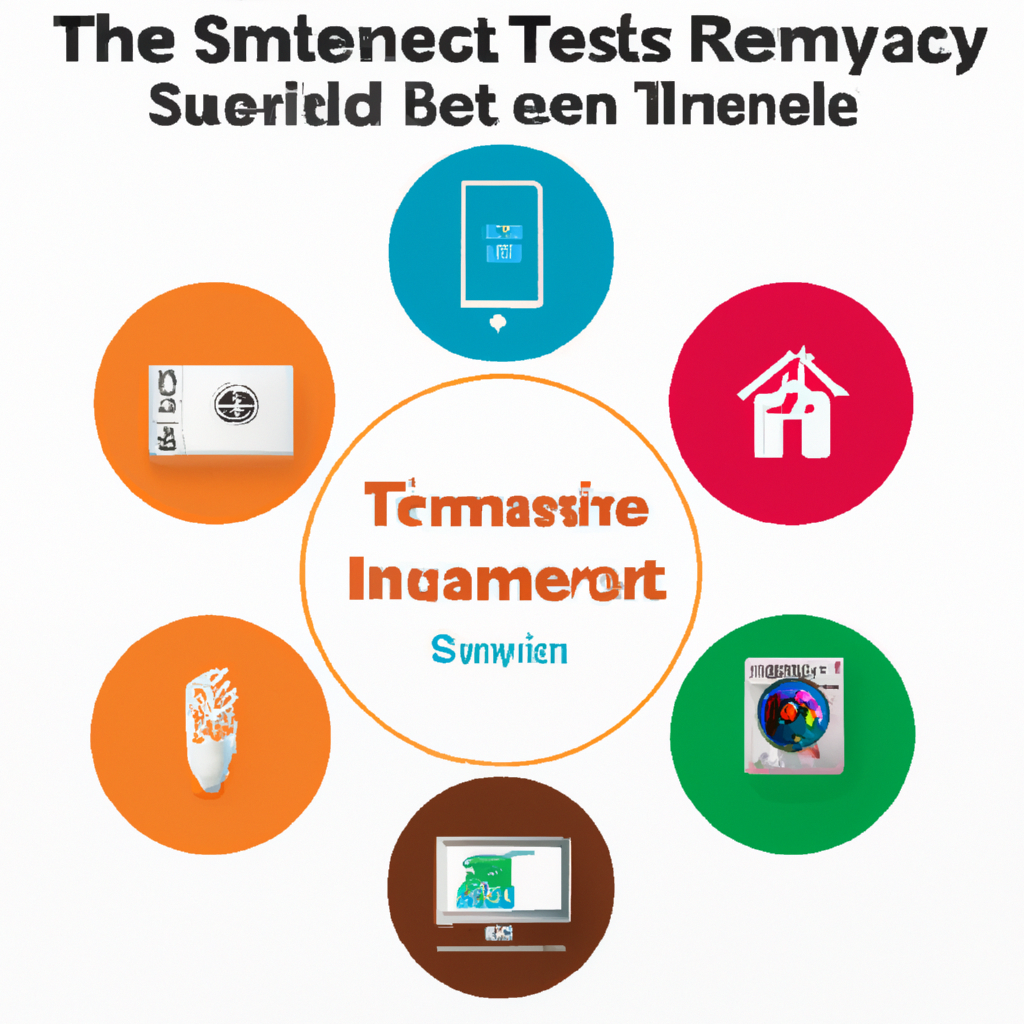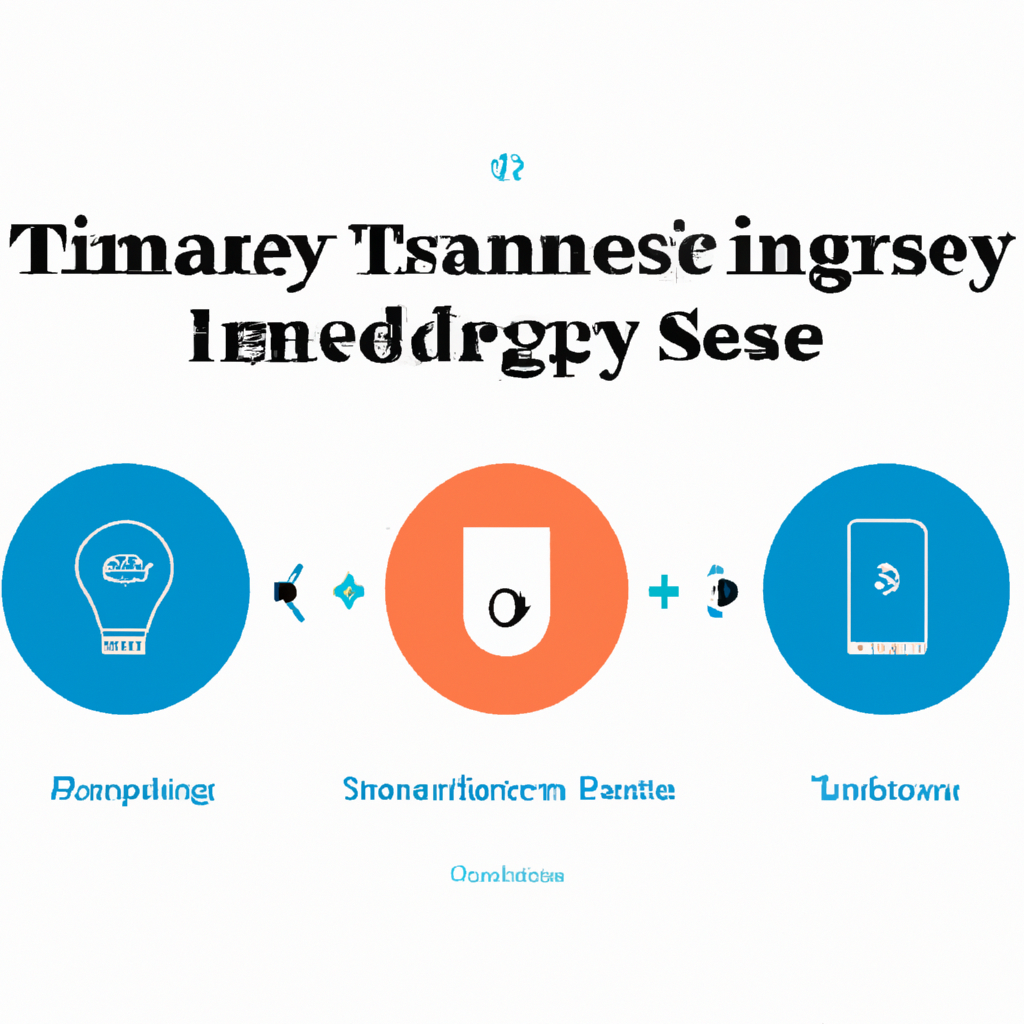Imagine having a home where every device is seamlessly connected, working together to create a comfortable and efficient living environment. In today’s world of smart technology, this is no longer a far-fetched dream. Smart thermostats have emerged as a key player in the realm of home automation, offering the ability to integrate with other smart home devices. But how exactly do these intelligent temperature controllers collaborate with other gadgets and appliances? We’ll uncover the fascinating world of smart thermostat integration and explore the endless possibilities it brings to your home.

Smart Thermostats and Smart Home Integration
Overview of smart thermostats
Smart thermostats are advanced devices that provide homeowners with the ability to control and manage the temperature of their homes remotely. They offer a range of features and functionalities that go beyond traditional thermostats, making them an excellent addition to any smart home system. With their integration capabilities, smart thermostats can seamlessly communicate with other smart home devices, enhancing automation, convenience, and energy efficiency.
Introduction to smart home devices
Smart home devices refer to a wide range of interconnected devices that can be controlled and monitored remotely using a smartphone or other compatible devices. These devices are designed to make our lives easier, more comfortable, and more secure. Examples of smart home devices include smart lighting systems, smart speakers and voice assistants, smart locks and security systems, smart sensors and detectors, smart appliances, and smart entertainment systems. These devices can work together to create a cohesive and interoperable smart home ecosystem.
Benefits of Integrating Smart Thermostats and Smart Home Devices
Enhanced automation and convenience
Integrating smart thermostats with other smart home devices enables enhanced automation and convenience for homeowners. For example, by connecting a smart thermostat with a smart lighting system, you can create a scene that automatically adjusts the temperature and lights when you arrive home. This eliminates the need to manually adjust the settings and creates a more seamless and comfortable living experience.
Increased energy efficiency
One of the key benefits of integrating smart thermostats with other smart home devices is increased energy efficiency. With the ability to gather data from various sources such as occupancy sensors and weather forecasts, smart thermostats can optimize temperature settings based on your preferences and patterns. This results in energy savings and reduced utility bills, as the thermostat can adjust the heating or cooling system to be more efficient when you are away or asleep.
Improved comfort and customization
Integrating smart thermostats with other smart home devices also allows for improved comfort and customization. By connecting the thermostat with smart sensors and detectors, you can create a more comfortable environment by adjusting the temperature based on factors such as humidity or air quality. Additionally, with the help of integration platforms and hubs, you can personalize your smart home experience by creating customized routines and schedules for temperature control.

Common Communication Protocols Used in Smart Home Integration
Wi-Fi
Wi-Fi is one of the most common communication protocols used in smart home integration. With Wi-Fi connectivity, smart thermostats can connect to your home network and communicate with other compatible devices. This allows for seamless control and monitoring of the thermostat from anywhere with an internet connection.
Z-Wave
Z-Wave is a wireless communication protocol specifically designed for smart home devices. It operates on a low-power radio frequency, allowing for long-range and reliable communication between devices. Z-Wave-enabled smart thermostats can communicate with a wide range of Z-Wave devices, such as smart locks, sensors, and lighting systems, creating a fully integrated and interoperable smart home ecosystem.
Zigbee
Similar to Z-Wave, Zigbee is a wireless communication protocol that enables devices to communicate with each other. Zigbee-enabled smart thermostats can connect to Zigbee devices, such as smart light bulbs, plugs, and switches, creating a seamless and interconnected system. Zigbee operates on a low-power, mesh network, ensuring reliable communication and extended range.
Bluetooth
Bluetooth is a short-range wireless communication protocol commonly used for connecting devices such as smartphones, tablets, and headphones. Bluetooth-enabled smart thermostats can be controlled directly from a smartphone or tablet, allowing for convenient and intuitive control of temperature settings. However, due to its limited range, Bluetooth integration typically requires the user to be in close proximity to the thermostat.
Thread
Thread is a relatively new communication protocol designed specifically for smart home devices. It is based on the low-power, mesh networking technology and offers secure and reliable communication between devices. Thread-enabled smart thermostats can communicate with other Thread devices, creating a resilient and highly interconnected smart home ecosystem.
Integration Methods for Smart Thermostats
Direct integration via manufacturer’s app
Many smart thermostat manufacturers provide their own dedicated apps for controlling and managing their devices. These apps allow for direct integration between the smart thermostat and other compatible devices offered by the same manufacturer. Through the app, users can control and monitor the thermostat, as well as access additional features and functionalities specific to the manufacturer’s ecosystem.
Integration platforms and hubs
Integration platforms and hubs offer a centralized solution for integrating and managing multiple smart home devices. These platforms, such as Apple HomeKit, Google Assistant, and Samsung SmartThings, provide a unified interface for controlling and monitoring various devices, including smart thermostats. By connecting the thermostat to an integration platform or hub, users can easily create automation routines, scenes, and schedules that involve multiple devices.
IFTTT (If This Then That)
IFTTT is a popular web-based service that allows users to create custom automation routines, or “applets,” by connecting various online services and smart devices. With IFTTT, users can link their smart thermostat with other compatible devices and set up trigger-action combinations. For example, you can create an applet that adjusts the thermostat temperature when you leave or arrive home based on your smartphone’s location.

Compatible Smart Home Devices for Integration
Smart lighting systems
Smart lighting systems, such as Philips Hue or LIFX, can be seamlessly integrated with smart thermostats to create customized lighting and temperature scenes. For example, you can create a scene that automatically dims the lights and lowers the temperature when you’re watching a movie.
Smart speakers and voice assistants
Smart speakers and voice assistants, like Amazon Echo or Google Nest, can be used to control the temperature of your smart thermostat using voice commands. You can simply say, “Hey, Google, set the thermostat to 72 degrees,” and the smart speaker will relay the command to the thermostat for immediate adjustment.
Smart locks and security systems
Integrating smart thermostats with smart locks and security systems can enhance home security and automation. For example, you can set up a routine that automatically adjusts the thermostat temperature and locks the doors when you arm the security system in “Away” mode.
Smart sensors and detectors
Smart sensors and detectors, such as motion sensors or window/door sensors, can be integrated with smart thermostats to optimize temperature control based on occupancy and environmental factors. For instance, when a motion sensor detects no activity for a certain period, the thermostat can automatically adjust the temperature to save energy.
Smart appliances
Smart appliances, such as refrigerators or washing machines, can communicate with smart thermostats to optimize energy consumption. For example, the thermostat can receive signals from the refrigerator to adjust the temperature settings during peak energy demand periods, saving energy and reducing utility costs.
Smart entertainment systems
Integrating smart thermostats with smart entertainment systems, such as audio/video receivers or streaming devices, allows for enhanced comfort and convenience. You can create a routine that automatically adjusts the temperature and dims the lights when you start watching a movie or playing music.
Integration Examples and Use Cases
Controlling temperature with voice commands
With the integration of smart thermostats and voice assistants, you can control the temperature of your home using voice commands. For example, you can say, “Alexa, set the thermostat to 72 degrees,” and the temperature will be adjusted accordingly, providing a hands-free and convenient experience.
Creating customized automation routines
By integrating smart thermostats with other smart home devices, you can create customized automation routines. For instance, you can set up a routine that automatically adjusts the thermostat temperature based on the time of day or your location, ensuring optimal comfort and energy efficiency.
Utilizing sensor data for optimized HVAC control
Integrating smart thermostats with various sensors, such as occupancy sensors or air quality sensors, allows for optimized HVAC control. The thermostat can receive data from these sensors to determine when to adjust the temperature or activate/deactivate the HVAC system, ensuring maximum comfort while minimizing energy consumption.
Smart thermostats and home security integration
Integrating smart thermostats with home security systems and smart locks enhances home security and automation. For example, when you arm the security system, the thermostat can automatically adjust the temperature and lock the doors, providing peace of mind and energy savings when you are away from home.
Syncing with smart entertainment systems
Smart thermostats, when synced with smart entertainment systems, can create a more immersive and comfortable entertainment experience. For instance, the thermostat can adjust the temperature and lighting based on the content you’re watching or playing, enhancing the ambiance and overall enjoyment.

Interoperability Challenges and Solutions
Compatibility issues between different brands
One of the challenges in smart home integration is compatibility issues between different brands and devices. Not all smart thermostats are compatible with every smart home device, and vice versa. To overcome this challenge, it is important to research and choose smart home devices that are compatible with each other or utilize integration platforms that support a wide range of devices.
Finding and configuring integration platforms
Another challenge is finding and configuring the right integration platform or hub for your smart home system. With numerous platforms available, it can be overwhelming to choose the one that best suits your needs. It is recommended to read reviews, compare features, and consider ease of use before selecting an integration platform. Additionally, thorough configuration and setup of the platform may be required to ensure seamless communication between devices.
Ensuring data privacy and security
Integrating smart home devices, including smart thermostats, raises concerns about data privacy and security. It is crucial to choose devices and platforms from reputable manufacturers that prioritize user privacy and data protection. Regularly updating firmware and software of all integrated devices is also essential to safeguard against security vulnerabilities and ensure the latest security features are utilized.
Considerations when Integrating Smart Home Devices
Compatibility and system requirements
When integrating smart home devices, it is important to consider compatibility and system requirements. Ensure that the devices you choose are compatible with your existing smart home ecosystem and have the necessary hardware and software requirements for integration.
User-friendliness of integration
Consider the user-friendliness of the integration process. Some devices may require complex setup and configuration, while others offer a more seamless and intuitive integration experience. Choose devices and platforms that align with your level of technical expertise and desired ease of use.
Potential cost implications
Integrating smart home devices may come with additional costs. Some devices have upfront costs, while others may require subscription fees for full functionality. It is important to consider the potential cost implications and ensure they fit within your budget.
Scalability and future-proofing
When integrating smart home devices, consider scalability and future-proofing. Ensure that the devices and platforms you choose can accommodate future expansion and advancements in technology. This will allow for a more flexible and future-proof smart home system.

Best Practices for Successful Integration
Research and choose compatible devices
Thoroughly research and choose smart home devices that are compatible with each other or supported by integration platforms. This will ensure seamless communication and integration between devices and avoid compatibility issues down the line.
Ensure firmware and software updates
Regularly update the firmware and software of all integrated devices. Firmware and software updates often include bug fixes, security enhancements, and new features that can improve the functionality and security of the integrated system.
Grouping devices and creating scenes
Grouping devices and creating scenes can simplify the control and management of your smart home system. Group similar devices together, such as smart lights or smart sensors, and create scenes that automate specific actions across multiple devices. This will streamline your smart home experience and make it more convenient to control and monitor your home.
Regularly test and troubleshoot integrations
Regularly test and troubleshoot the integrations within your smart home system. This will help identify any issues or inconsistencies and allow for prompt resolution. Regular testing will ensure that all devices are functioning properly and that automation routines and scenes are working as intended.
Conclusion
Smart thermostats offer a range of benefits when integrated with other smart home devices. Through enhanced automation, increased energy efficiency, and improved comfort and customization, homeowners can create a cohesive and efficient smart home ecosystem. Communication protocols such as Wi-Fi, Z-Wave, Zigbee, Bluetooth, and Thread facilitate seamless integration, while integration methods like direct integration, integration platforms, and IFTTT offer different approaches to connecting devices. By considering compatibility, user-friendliness, cost implications, scalability, and best practices, homeowners can successfully integrate smart home devices and create a more convenient and comfortable living environment.










